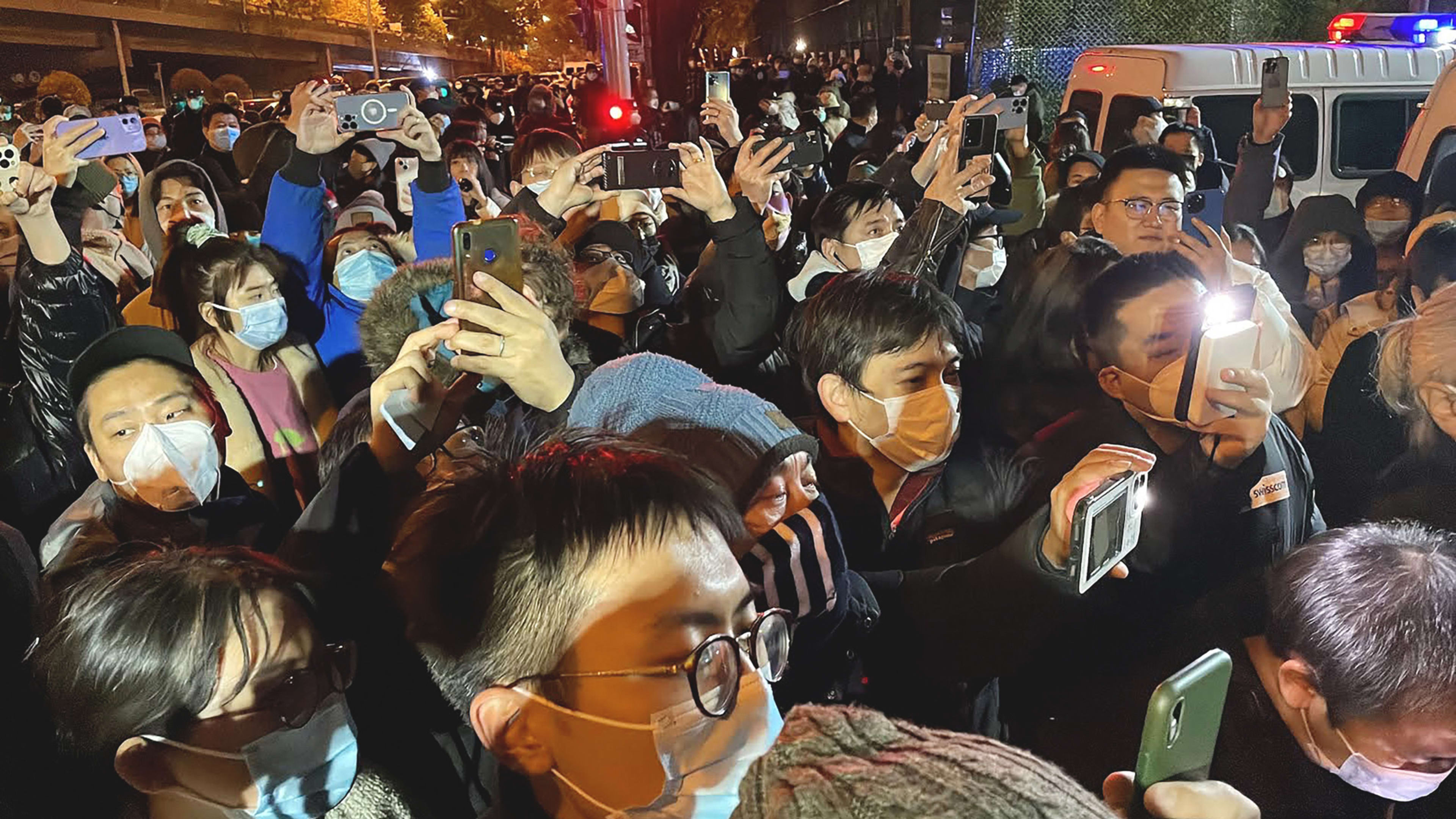As mass protests against Xi Jinping’s hard-line “zero Covid” restrictions spread in China, demonstrators have had to contend with social media censorship, location tracking, and facial recognition from the world’s largest state-backed techno-surveillance apparatus.
But not every barrier can be traced solely to the Chinese government: On at least one front, Silicon Valley is involved, too.
Earlier this month, Apple quietly added restrictions to its AirDrop feature for users in China, preventing customers from leaving their devices open to receiving files from passersby. In effect, the tech giant has eliminated Chinese activists’ ability to reach strangers using the widely available peer-to-peer communication tool.
AirDrop allows users to semi-anonymously send files directly using Bluetooth to other Apple users nearby, as long as recipients have their devices set to be discoverable by “everyone.” Before Apple’s update, Chinese activists could use AirDrop to disseminate information to strangers in crowded areas without revealing their own personal details, or going through a centralized platform.
Apple’s new update, shipped with iOS 16.1.1 on November 9, has quashed this tactic. Now, Apple users in mainland China will only be able to set their discoverability to “everyone” for 10 minutes before they automatically switch back to “contacts only.” That means the vast majority of Apple devices in China will be unable to receive strangers’ AirDrops even if their users want them. Apple’s release notes don’t mention this change, and only list “Bug fixes and security updates.” Apple has not publicly commented on the change, and a company spokesperson didn’t respond to a request for comment.
I saw AirDrop in action while covering Hong Kong’s pro-democracy uprisings between 2014 and 2019. With my discoverability set to “everyone,” I would occasionally receive AirDrops from strangers when visiting protest sites or even while standing on a packed bus or a subway. Sometimes the AirDrops contained details about upcoming demonstrations. Other times I received graphics with inspirational messages, or homemade political memes.
Public expressions of dissent are far less common in mainland China, where decades of tight monitoring and harsh repression have all but stifled explicit political activism. But in October, just before Xi Jinping secured an unopposed third term as China’s leader, some mainland Chinese residents used AirDrop to call for an end of Xi’s dictatorship. November’s update has made AirDrop protests something unlikely to be seen in China again anytime soon.
Mark Selden, a historian and sociologist who examined Apple’s relationship with China in his 2020 book Dying for an iPhone, said that Apple’s AirDrop changes “were clearly made by Apple in the context of pressure from the Chinese state.” The Cupertino giant is heavily dependent on China as a manufacturing hub and a customer base, so it has “very little choice” but to bend to Chinese officials if it wants to continue operating there, he said.
In 2017, at the behest of Chinese cybersecurity regulators, Apple agreed to transfer control of Chinese users’ iCloud data to a Chinese state-owned company. Apple has also removed apps from its Chinese App Store at the request of Chinese authorities, including foreign news apps and apps supporting the Hong Kong protests.
Selden said that Apple usually tries to comply with Chinese requests quietly — or does so indirectly through Foxconn, its manufacturing partner, which makes most of the world’s iPhones at its factories in China. But in this case, “they’ve been caught with their pants down, so to speak. And they’re trying to deal with it by not acknowledging the actual reasons for their actions. But the reasons seem reasonably clear.”
Foxconn has itself been a site of recent unrest. Last Tuesday, large protests erupted at the company’s plant in Zhengzhou after months of simmering anger over wage disputes and Covid lockdowns. Some workers had broken out of the factory in October to walk home, while others say they were quarantined without food. Workers hired to fill labor shortages say they were cheated out of promised bonuses, which Foxconn blamed on a “technical error.”
Chinese officials have downplayed the current protests, which erupted across the country after a fire in the Xinjiang region killed 10 people last Thursday in a building reportedly under lockdown. As demonstrations raged on Sunday, the nationalist state newspaper Global Times published an editorial blaming “Western forces” for fueling criticism of China’s pandemic policies.
The protesters aren’t having it. In one video from the protests widely shared on social media, a man yells: “We can’t even access the foreign internet. How are foreign forces meant to be communicating with us? We only have domestic forces not allowing us to govern ourselves.”
Recognize your brand’s excellence by applying to this year’s Brands That Matter Awards before the early-rate deadline, May 3.
